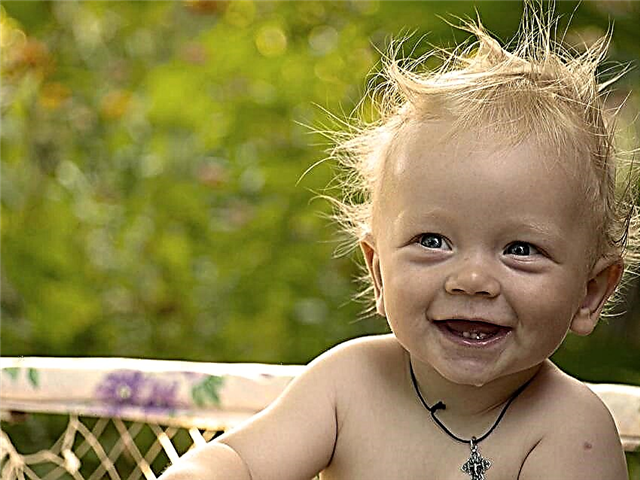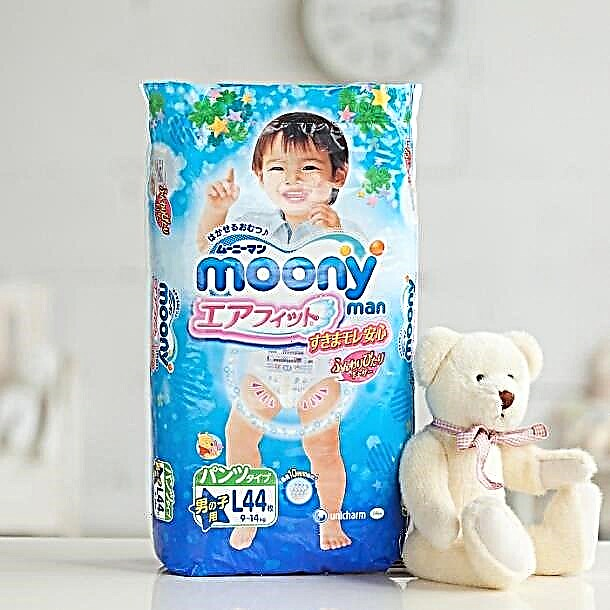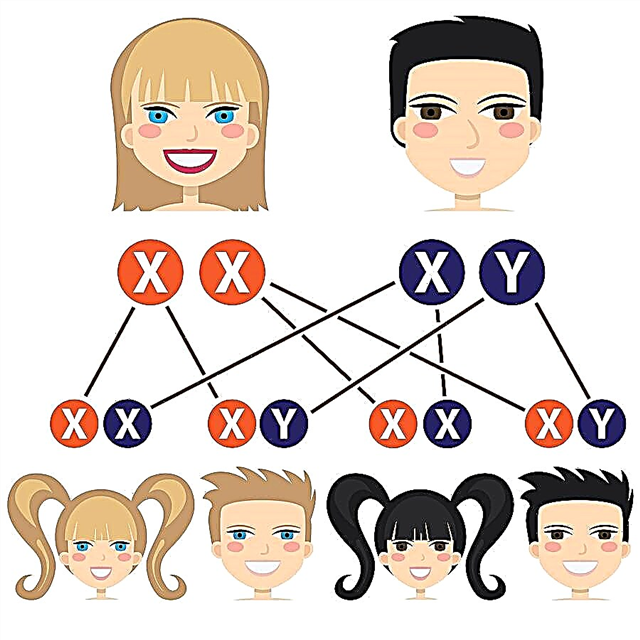
Fish was once a prohibited item in a child's diet. It was believed that a fish given to a child who does not yet know how to speak can make him remain silent for a long time. Today, signs have faded into the background, and a tasty and aromatic product is already ready to enrich the child's body with useful substances.
All mothers who care about the health of their children think about what kind of fish is good for children and how to cook it.

What kind of fish can you give to children?
Fish is a vitamin-rich food that baby food manufacturers recommend to include in the diet from 8 months.
In fact, pediatricians advise not to rush with this product, leaving its development for 10-11 months of life, after full adaptation to vegetables, fruits, dairy products and meat.
It is important to take a very responsible attitude to the choice of fish for the children's menu, because some of its types are dangerous for the baby's delicate stomach. In addition, individual and visually attractive individuals may contain parasites and pathogens.
By habitat, fish are classified:
- on freshwater or river - living in rivers, lakes and ponds;
- marine - living and breeding in the seas;
- artificially grown.

Experts advise to opt for marine life, since they have few bones, and their terrain is more environmentally friendly, unlike river competitors.
Marine life includes:
- cod;
- haddock;
- pollock;
- horse mackerel.
However, river fish caught in clean reservoirs can take pride of place on the children's table. It is less allergenic and is well absorbed by the child's body, although it requires more careful processing from the bones.
River fish recommended for the diet of children:
- river trout;
- hake;
- carp;
- river perch.
Do not be afraid of the above species, especially if the store or the fisherman informs about the place of fishing.


Experts advise to beware of artificially grown individuals, as a rule, teeming with antibiotics, hormones and other growth enhancers. Their habitat leaves much to be desired, and almost all useful substances are overshadowed by chemical components.
When looking for the perfect fish for a baby in the first 2 years of life, you should pay attention to its color.
Fish can be:
- red;
- white.
Its color depends on the taste preferences of the fish throughout life. So, eating red crustaceans, the individual receives a special pigment that affects its color. Note that red fish are more popular in the market, however, for a child, the best option would be a white, less allergenic option.
However, if allergies are not observed, red river trout can be a good alternative in the diet.


The classifications of multifaceted and multi-species fish do not end there.
They are subdivided:
- fatty;
- moderately fatty;
- non-greasy.
At 1 year of age and up to 5 years, pediatricians recommend exclusively low-fat varieties for baby food, for example, hake, pollock, perch and navaga.
They are slightly inferior in taste to fatty and moderately fatty competitors, however, they are easier to digest and do not cause problems with the baby's fragile intestines.

Fish names such as catfish, carp and sea bass are medium-fat varieties. They delight fish lovers with a delicate taste and a whole range of vitamins. If you decide to give them to your child, you should not add fat by frying. Steamed carp or catfish can be an option., able to diversify the baby's fish menu. Fatty varieties can contain up to 33% fat, and therefore experts do not recommend them for frequent consumption, even for adults.
When giving preference to one or another type of product, you should pay attention to the size.
Researchers agree that small fish contain more nutrients and less poisonous than their larger counterparts. Of course, it takes longer to cook small fish, however, the health of the child is more important.
The ideal fish for a child has the following features:
- white;
- sea or river, caught in clean waters;
- non-greasy;
- small size.
The fish for the first feeding can be considered as hake, perch, navaga, pike perch, flounder, haddock, pollock. As you can see, the list for selection is quite wide.

Which one is worth giving up?
The first and important criterion for refusing a particular fish is its high fat content. Despite its rich taste, softness and the presence of a high concentration of omega-3 fatty acids, it is not recommended for children under three years of age to eat it.
Fatty fish include:
- sardine;
- herring;
- salmon;
- tuna;
- shark;
- Atlantic sturgeon.
After three years, this fish is able to benefit the body, however, it is recommended to use it no more than once a week boiled or baked in its own juice.
Another criterion forbidden for kids is an artificial habitat. In addition to the fact that artificial reservoirs are considered one of the most polluted habitats, their nutrition and hormones negatively affect not only children, but also adults.


List of prohibited products for toddlers of all ages.
- Salmon and trout - are fed with food with a special dye canthaxanthin, which makes the fish marketable bright red. Regular consumption of products with such additives causes visual impairment.
- Sole or pangasius - is bred in Southeast Asia in the Mekong River, which is considered the most polluted in the world.
- Tilapia - is massively processed by male hormones, and is also an omnivorous species, carrying many intestinal infections and pathogens.
It should be noted that food for fish grown artificially does not have strict requirements, and therefore unscrupulous sellers actively use low-quality feed, flavored with antibiotics and other chemical compounds. Regularly consuming such varieties and offering them to children can significantly suppress natural immunity.

The benefits and harms of different types
As mentioned earlier, the low-fat saltwater white fish is suitable for most children. Nevertheless, each variety has its own contraindications and features that every parent should be aware of.
The benefits of white fish:
- easily digestible protein;
- the presence of all B vitamins such as riboflavin, thiamine, folic acid, etc .;
- the presence of vitamin C in the composition;
- the presence of phosphorus and calcium;
- a huge amount of vitamin B12, which is responsible for preventing anemia.
Of course, such a product, with regular use, helps to establish metabolic processes, increase immunity, balance the nervous system and help a child find healthy teeth and bones.


Despite all the benefits of white fish, some parents believe that red fish is the most beneficial.
Differences from the white competitor:
- increased amount of protein;
- increased fat content;
- an increased amount of polyunsaturated acids;
- lack of vitamin B12 in the composition;
- rich delicate taste.
Thus, for a child, the only positive thing about red fish is its tenderness and juiciness.
A child's diet must be balanced, and therefore daily feeding even the most useful product can cause negative consequences for the body.
By introducing red fish into the menu, you can easily undermine the normal processes of the pancreas, as well as provoke allergies, constipation and diarrhea.
The erratic and daily consumption of white varieties can also have a negative effect on the pancreas due to the high phosphorus content. In addition, in order to spice up the unsaturated taste of white fish with salt, parents impose an excessive load on the kidneys of the child for his age.

How to accustom to the product?
Best of all, babies under one year old get used to juices and fruit purees, while parents have to get nervous with fish and meat. Of course, this is due to the sweet taste of the fruit, which vaguely reminds a baby of the taste of breast milk or formula. Nevertheless, it is necessary to accustom to fish.
Beginning at 8-9 months, training begins with mashed potatoes. Chopped and unsalted fish is served to the child in the amount of ½ teaspoon... As a rule, such small volumes are perceived quite well. Full portions of mashed potatoes may or may not be to your child's taste. In this case, pediatricians recommend experimenting with permitted fish species, but in no case should a child be forced to eat... One way or another, children are different, which means there are those whose negative attitude towards fish manifests itself from infancy.
Mixing fish puree with vegetable puree is the perfect way out of this situation.
So, the fish goes well:
- with potatoes;
- with zucchini;
- with cauliflower.
Sweet vegetables such as beets, carrots, pumpkin should be avoided.


Mixing should take place gradually. For instance, for the first time for 100 grams of vegetable puree, 1-2 teaspoons of fish... If the child likes this mixture, next times the ratio of fish puree to vegetable puree can be slightly increased.
After two years, the baby is already difficult to attract mashed potatoes, and therefore the type of fish must be modified. In the event that the boiled or steamed fish does not appeal to them, the parents go to little tricks.
Ways to change the taste of fish:
- bake or stew fish in sour cream;
- bake the fish, sprinkle with grated cheese;
- prepare the batter and, dipping small pieces of fillet into it, fry until golden brown;
- boil the pieces in chicken broth;
- make soufflé with eggs and other vegetables.
Experimentation and some trick for good will help little fussy people to love the delicate fishy taste.

What can be replaced in the diet?
Sometimes you have to give up the use of fish products. This may be due to allergies and individual intolerance to the product. Fortunately, with the passage of age, the signs of allergy may disappear, however, during the period of refusal from fish, it is important to replace it with products that are similar in vitamin composition.
So, for a child, an easily digestible protein can serve:
- lean meat;
- dairy products.
Eating chicken, turkey and lean beef can significantly replenish the required amount of protein in the body. Note that, unlike fish, it is absorbed in the body only by 85%, while fish products - by 94–98%.
The child's body can get protein from fermented milk and dairy products. At the same time, pediatricians advise the use of adapted children's products that have a low fat balance in their composition. "Adult" food can be poorly absorbed by the child, causing various problems in the gastrointestinal tract.
When the baby reaches one year old, fish oil can be introduced into his diet. The correct dosage and strict adherence to the recommendations of the pediatrician will enrich the growing body with useful fats.

Cooking subtleties and recipes
The taste of fish and the baby's future love for it directly depends on the efforts of the parents. Fresh and properly cooked fish will certainly please your beloved child.
Product freshness criteria:
- deep red gills;
- eyes without clouding;
- the color of the meat is light.
Pediatricians advise choosing fresh fish for cooking, however, a quality freshly frozen product can be a worthy alternative. It should be noted that defrosting fish in the microwave does not need to bring it to complete thawing, leaving time for natural defrosting in salted water.
The first fish dish is mashed potatoes. The product for it should be boiled for 20 minutes in a little unsalted water or steamed. Experienced housewives advise to cook the fish whole or in large pieces to preserve its juiciness and rich taste. The fish should be immersed in boiling water, thereby preventing it from overcooking and losing its taste. The finished product is peeled from the remaining seeds and grind with a blender or meat grinder with the addition of a small amount of water.

Subsequent acquaintance with fish by children from one year old takes place with the help of soufflé, dumplings and meatballs. To prepare a tender soufflé, the fish is boiled using the above method and turned into a homogeneous mass. In the future, an egg is driven into it, after which it is placed in a water bath.
Fish dishes abound in various kinds of minced meat variations. So, the recipe for fish dumplings is simple and original.
To prepare it you need:
- cook minced fish;
- add a piece of white bread, ground and soaked in milk;
- beat the chicken protein until fluffy;
- mix it into the mass with gentle movements;
- form small balls;
- place the workpieces in boiling water for 10-15 minutes.
Delicate snow-white dumplings with a piece of butter are served warm.

Popular in the fish menu and meatballs, the necessary ingredients for which are:
- minced cod fish;
- fried carrots and onions;
- egg;
- sour cream;
- wheat bread;
- flour for breading.
The meatballs are prepared by combining minced fish with carrots and onions. To do this, they are scrolled through a meat grinder, not forgetting to add bread. The finished mixture is diluted with water until lightness appears and mixed with an egg. Having formed balls from the mixture, they are doused with flour and placed on a baking sheet in the oven for 10 minutes, after which they are poured with sour cream and cooked for another half hour.

For information on how to cook fish for a child, see the next video.
Find out if your child's weight is normal using the following calculator.



